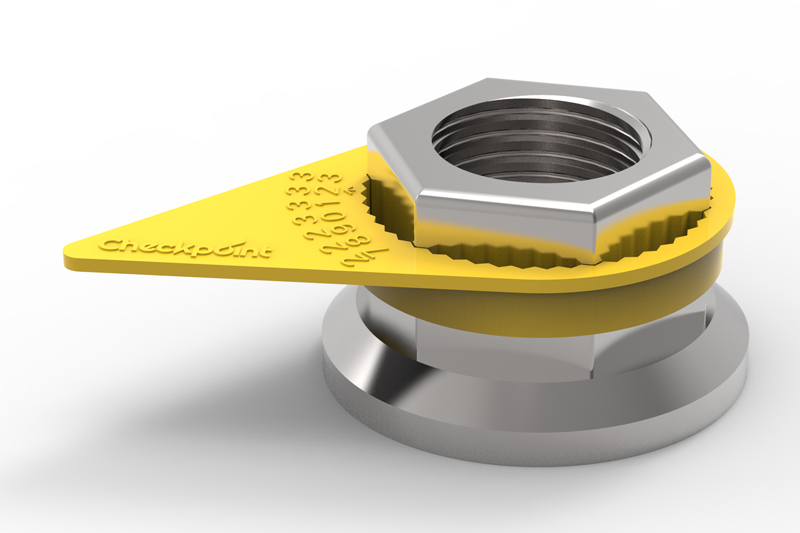
Checkpoint, expert in wheel safety, offers readers its best practice guide to using its wheel nut indicators, as well as explaining the major causes of wheel loss.
When Mike Marczynski identified a need in the commercial vehicle market for a device to help prevent wheel nuts from loosening, Checkpoint was born. The company’s range of wheel nut indicators are designed to avoid the potential implications of a wheel detaching itself from a vehicle, and has therefore devised a handy guide to promote best practice in wheel safety.
Check
■ Wire brush the base and threads of each stud to remove any rust or dirt that could compromise the wheel nuts
■ Ensure the studs and nuts are free of dirt and grease
■ Use a Checkthread kit to check for any damage to the studs and threads
■ Replace any parts that are worn or damaged
■ Ensure correct replacement studs are used, in order to prevent stud breakage
Fit
■ Attach the wheel
■ Torque the wheel nuts to the manufacturer’s specification using a correctly calibrated torque wrench
■ Ensure the nuts are torqued in the correct sequence, as shown in the image here
Apply
■ Fit a product of your choice from the Checkpoint range
■ If you are using a Checkpoint Original, Dustite, Dustite LR or Checklink, we recommend fitting one in red as a reminder to re-torque this wheel
■ Fit the indicators in a recognisable pattern, we recommend point-to-point
Re-torque
■ It is recommended that the wheel is inspected and re-torqued after either 30 minutes of driving, or 40-80 miles
■ If movement has occurred, a second re- torque is necessary. Continue using the red product until this process is complete
■ If on the third inspection any further movement is visible, the wheel should be removed and a full investigation carried out
■ If there is no movement, replace red products with yellow
Inspect
■ Carry out daily checks as part of your standard maintenance procedure
■ Ensure periodic re-torques are completed in line with maintenance procedures
■ Report any movement of the indicators directly to the fleet manager and ensure re-torque is completed
■ Report any melting of the indicators directly to the fleet manager, as this could be a sign of faulty brakes or bearings
What are the major causes of wheel loss?
Excess Vibrations: Poor road conditions or overloaded vehicles can lead to movement between the mating faces, which can gradually work a wheel nut loose.
Worn/damaged studs: Studs can be damaged over time and need to be inspected and replaced. Damage to studs can lead to stresses, resulting in the shearing of the stud.
Stud hole elongation: Stud hole elongation is caused by the poor fitment of the wheel. This can be enhanced by excessive acceleration, braking and cornering forces.
Incorrect torqueing: Under or over torqueing and the incorrect torqueing sequence can result in a loss of clamping force. Over torqueing can result in stretched threads and potentially the shearing of studs.
Inaccurately calibrated torque wrench: Torque wrenches need regular calibration to avoid false values being applied to a nut.
Incorrect use of air impact tools: Torque is not measurable using these tools and is often excessive, causing damage to the studs, nuts and washers.
Inconsistent safety inspections: A lack of regular visual checks for wheel damage or loose wheel nuts can lead to a vehicle being operated with unknown defects. This can present a serious safety risk and lead to further damage of the vehicle components.








